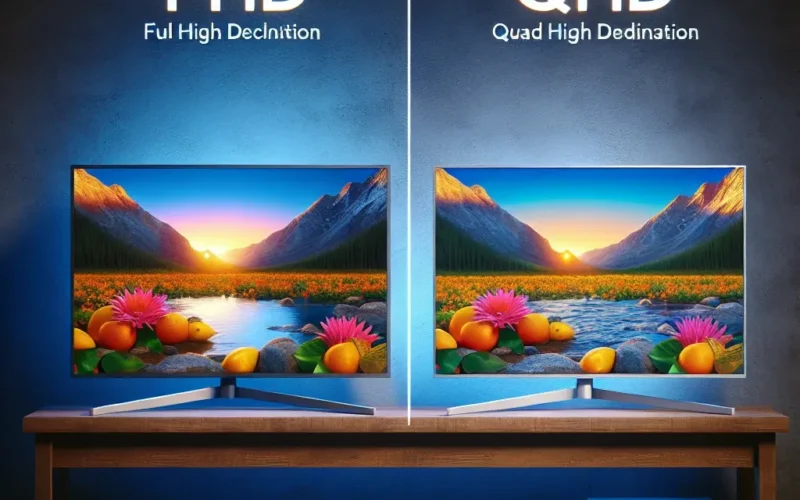When you’re in the market for a new LED monitor, two common display resolutions you are likely to encounter are FHD (Full High Definition) and QHD (Quad High Definition). Understanding the differences between these resolutions can help you make a more informed decision, whether you’re using your monitor for office work, gaming, or media consumption.
Understanding Display Resolutions
Display resolution is a critical factor that determines the clarity and crispness of the images displayed on your screen. Here is a basic comparison between FHD and QHD:
| Resolution | Pixels | Aspect Ratio |
|---|---|---|
| FHD | 1920 x 1080 | 16:9 |
| QHD | 2560 x 1440 | 16:9 |
FHD: Full High Definition
Resolution and Clarity
FHD stands for Full High Definition and offers a resolution of 1920 x 1080 pixels. It has become the standard resolution for many types of displays, including televisions, computer monitors, and laptops. This resolution is suitable for various tasks such as web browsing, document editing, and watching videos.
Common Uses
- Office work
- Standard gaming
- Watching HD videos
Advantages
- Affordability
- Lower power consumption
- Good enough for most daily tasks
Drawbacks
- Less sharp than higher resolutions
- Limited in screen real estate
- Not ideal for professional photo and video editing
QHD: Quad High Definition
Resolution and Clarity
QHD stands for Quad High Definition, offering a resolution of 2560 x 1440 pixels. This resolution is four times the resolution of HD (720p) and provides a significant improvement over FHD. It’s ideal for users who require more screen real estate and sharper image quality.
Common Uses
- Professional photo and video editing
- Advanced gaming
- Increased productivity with multiple windows
Advantages
- Sharper and clearer images
- Greater screen real estate
- Better for multitasking
Drawbacks
- Higher cost
- Increased power consumption
- More taxing on hardware
Suitability for Different Users
Both FHD and QHD have their own sets of advantages and drawbacks. The choice between them should be based on your specific needs and usage:
For Casual Users
If your primary activities involve office work, browsing the web, or watching standard HD videos, an FHD monitor should suffice. It offers adequate clarity and is generally more affordable.
For Gamers
Gaming enthusiasts would benefit more from a QHD monitor. The higher resolution ensures that graphics are sharper, improving the overall gaming experience. However, be mindful that a higher resolution requires a more powerful graphics card.
For Professionals
For professionals engaged in photo and video editing, graphic design, or any task that benefits from extra screen real estate, a QHD monitor is highly recommended. The extra pixels provide greater detail and allow for a more efficient workspace.
Performance and Hardware Requirements
FHD
An FHD monitor is less demanding on hardware, making it suitable for budget systems. A mid-range graphics card can easily handle most applications and games at this resolution without compromising on performance.
QHD
A QHD monitor, on the other hand, requires a more robust hardware setup. Advanced graphics cards and higher CPU performance are necessary for an optimal experience. This is particularly important for gamers and professionals running demanding applications.
Impact on Productivity
The higher resolution of QHD monitors allows for better multitasking by providing more screen space. You can open multiple windows side by side without feeling cramped, which is particularly beneficial for productivity tasks.
Price Comparison
Price is another crucial factor:
| Resolution | Average Price Range (USD) |
|---|---|
| FHD | $100 – $300 |
| QHD | $300 – $600 |
Conclusion
In summary, the choice between FHD and QHD largely depends on your needs and budget. FHD monitors are great for everyday tasks and standard gaming, providing good performance at an affordable price. QHD monitors offer better clarity and more screen real estate, which can significantly benefit gamers and professionals but come at a higher cost. Evaluating your specific requirements will ensure you pick the monitor that best suits your needs.

